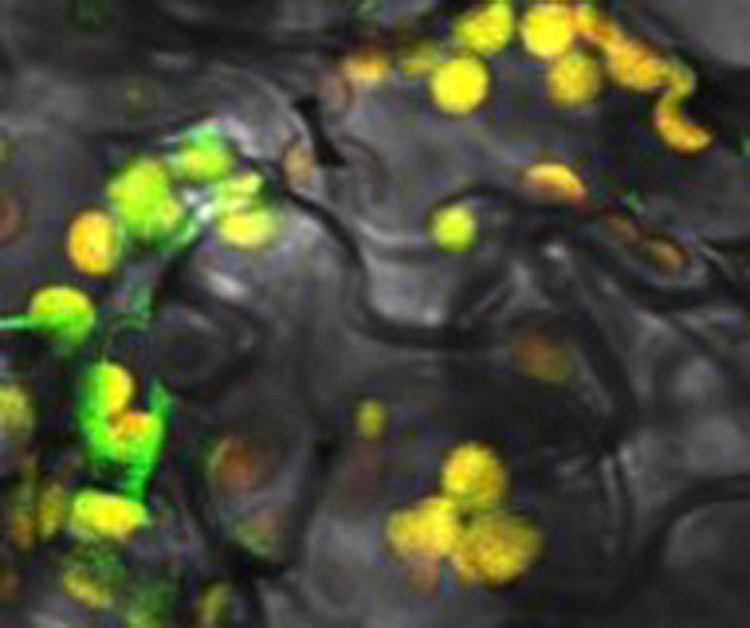UK researchers make important finding in plant disease resistance
UK researchers make important finding in plant disease resistance

University of Kentucky plant pathology researchers have uncovered the function and placement of another component in a pathway that triggers plant disease resistance. Their finding brings them one step closer to understanding this pathway that allows plants to fend off secondary infections. This knowledge will allow scientists to help plants simultaneously defend themselves against a variety of pathogens which, in turn, could help crops.
A team of researchers, led by Pradeep Kachroo and Aardra Kachroo of the University of Kentucky College of Agriculture, Food and Environment, studied the chemical signals involved in cell-to-cell communication. This is how pathogen-infected tissue lets other parts of the plant know to prepare itself against future pathogen infections. They found that pipecolic acid, a small organic compound derived from lysine, initiates the process by inducing the accumulation of free radicals. Free radicals initiate a pathway resulting in the accumulation of the signaling chemicals salicylic acid and glycerol-3-phosphate. Salicylic acid, glycerol-3-phosphate, and to a lesser extent, pipecolic acid then travel within the plant as part of the defense “preparedness” process. There, salicylic acid and glycerol-3-phosphate initiate additional pipecolic acid synthesis to continue this signaling pathway.
“Scientists knew about the importance of pipecolic acid in systemic signaling but did not understand how it related to the other known systemic chemical signals,” Pradeep Kachroo said. “We now not only know how pipecolic acid functions, but also how this chemical cooperates with the other signals.”
“The chemicals are like a team,” Aardra Kachroo said. “You need every single member, and their roles shift in relation to each other, not only at different plant locations with respect to pathogen presence but also with respect to the timing of infection.”
These signals also play a role in other important plant processes such as light recognition and root-to-shoot signaling. Therefore, understanding their interrelationship will help scientists better understand their roles in other nondefense-related physiologies.
“It’s exciting to consider eventually using these naturally occurring plant chemicals to improve crop resistance,” Pradeep Kachroo said. “Another important aspect of this study is that we are looking at defense-inducing chemicals that do not have a negative impact on yield.”
The research team members included lead author Caixia Wang, Ruiying Liu, Gah-Hyun Lim, Laura de Lorenzo, Keshun Yu and Arthur Hunt from the University of Kentucky College of Agriculture, Food and Environment. Kai Zhang was a research collaborator from Southwest University in China.
The study was published in Science Advances, which is an academic journal of the American Association for the Advancement of Science. It is available online at http://advances.sciencemag.org/content/4/5/eaar4509.
Research


